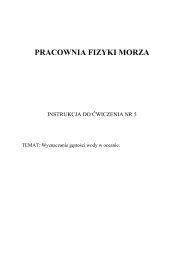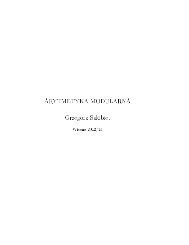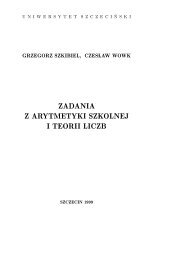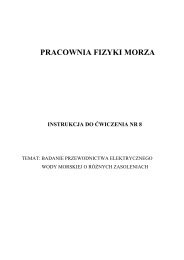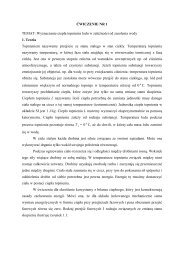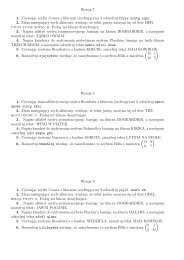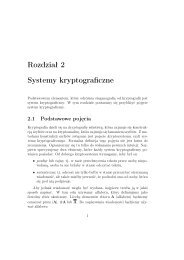Modelowanie molekularne - metody Monte Carlo
Modelowanie molekularne - metody Monte Carlo
Modelowanie molekularne - metody Monte Carlo
Create successful ePaper yourself
Turn your PDF publications into a flip-book with our unique Google optimized e-Paper software.
Wprowadzenie Pola siłowe Klasyczna metoda <strong>Monte</strong> <strong>Carlo</strong> Kwantowe <strong>metody</strong> <strong>Monte</strong> <strong>Carlo</strong><br />
Kwantowa dynamika <strong>Monte</strong> <strong>Carlo</strong> - PIMC<br />
Funkcja podziału w reprezentacji położeniowej:<br />
∫<br />
Q = ∑ dxψne ∗ −βĤ ψ n = ∑<br />
n<br />
n<br />
∫ ∫ ∫<br />
= dx 1 dx 2 · · · dx P<br />
P ∏<br />
n=1<br />
∫<br />
∫<br />
dx〈x|n〉ˆρ〈n|x〉 = dx〈x|ˆρ|x〉<br />
〈x n |e −βĤ/P |x n+1 〉, x P+1 = x 1 ,<br />
skąd wynika następująca postać operatora gęstości:<br />
ˆρ = [e −βĤ/P ] P .<br />
Przybliżenie wysokotemperaturowe/prymitywne - jeżeli<br />
β/P ≪ 1, to ze wzoru Bakera-Campbella-Haudorffa [1] wynika:<br />
x<br />
e −βĤ/P = e −β ˆV /(2P) e −β ˆT /P e −β ˆV /(2P) + O((β/P) 3 )<br />
⇒ 〈x n |e −βĤ/P |x n+1 〉 = e −βV (xn )/(2P) 〈x n |e −β ˆT /P |x n+1 〉e −βV (xn )/(2P) .<br />
1. J. A. Barker, J. Chem. Phys. 70, 2914 (1979)



